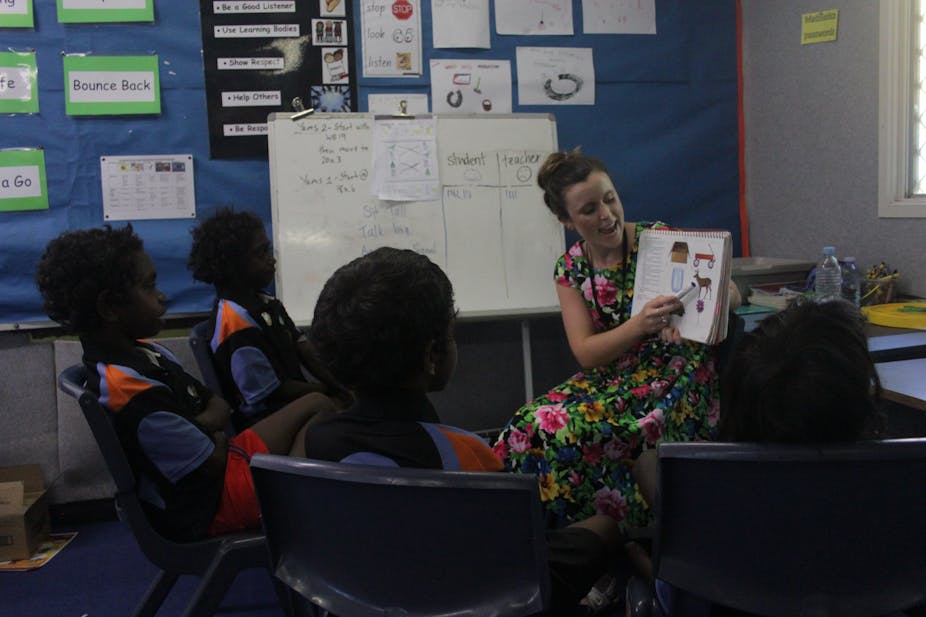This year’s Closing the Gap report delivers a result that has become all too familiar in comparing outcomes between Indigenous and non-Indigenous Australians: not enough progress is being made. There is improvement in some areas, but stagnation in others.
The government is right to highlight progress reducing infant mortality (which is on track to meet its target) and the fact that Indigenous children are more likely to have been immunised than non-Indigenous children by the age of five. Make no mistake: if sustained, these are massive achievements.
But other areas such as early childhood education, school attendance, literacy and numeracy, employment and life expectancy are not on target. This is a policy failure and a societal failure.
What the report doesn’t mention is that the changing structure of the Indigenous population is in most cases making change looking more positive than it otherwise would be. Without these demographic shifts, the story would probably be even worse.
It is tempting when looking at the year-on-year progress to become despondent, to feel that nothing works, or to assume it must be the fault of Indigenous Australians that the gaps aren’t closing. To consider perhaps starting again on policy. But, as argued by Mick Gooda, that would ignore that there has been positive change, especially in the long run. It would also be a terrible disservice to the fantastic work that thousands of Indigenous Australians are doing for their people at the community, regional, state/territory and national level.
One example of this is early childhood education (ECE). In an analysis that I co-authored with Lilia Arcos-Holzinger, we undertook the first investigation (that we know of) to document the effects of early education on a range of cognitive and developmental outcomes of Indigenous children.
This work utilised a rich set of data from the Longitudinal Study of Indigenous Children (LSIC), also known as Footprints in Time. If you aren’t aware of the dataset, then it is worth looking into, as it is another example of thousands of Indigenous carers (and interviewers) making a significant investment in time to provide information to “improve the understanding of, and policy response to, the diverse circumstances faced by Aboriginal and Torres Strait Islander children, their families and communities”.
Our study, while not reaching the “gold standard” of a policy trial, yields insights into the effect of early childhood education over the short term (two years after ECE participation) and over the longer term (three to five years after ECE participation).
The results indicate that preschool attendance has a strong positive association with reading and literacy outcomes in the short term. But it does not have any significant association with developmental outcomes in the short term. On the other hand, childcare attendance has no observed cognitive or behavioural effects in the short term.
In the longer term, we find evidence that both preschool and childcare participation were positively associated with reading and literacy, as well as maths and abstract reasoning. Both preschool and childcare participation also had a positive association with developmental outcomes, especially in terms of children demonstrating fewer behavioural difficulties.
An important finding is that the type of institution matters, as does the number of hours attended. Relative to preschools, childcare centres often do not have a capped maximum hours of attendance, a structured educational curriculum, or strict qualification requirements for staff. And we found some evidence that long hours of childcare attendance have a detrimental effect on the developmental outcomes of children.
In general, favourable cognitive and developmental effects were consistently more significant for preschool than for childcare participation. But Indigenous children still attend preschool at much lower rates than non-Indigenous children.
Our current early education system is widening, not narrowing, gaps later in life. We know some of the reasons for this. These include income constraints, location, curriculum that isn’t always relevant, and experiences of discrimination. Without closing this gap, there is no hope that other gaps will be closed, regardless of how much money we spend.
It is heartening, therefore, that a new target of 95% early childhood education attendance for all Indigenous four-year-olds was announced in the latest report. Our analysis and data in the report show that gaps in preschool participation are greatest in regional and urban areas, and that the previous focus on remote areas was inadequate.
It is time to rethink our approach to Indigenous affairs. It has been said many times before that this starts with listening to Aboriginal and Torres Strait Islander peoples on goals, aspirations and priorities. It also involves building on the best available evidence and rigorously trialling and evaluating programs.

